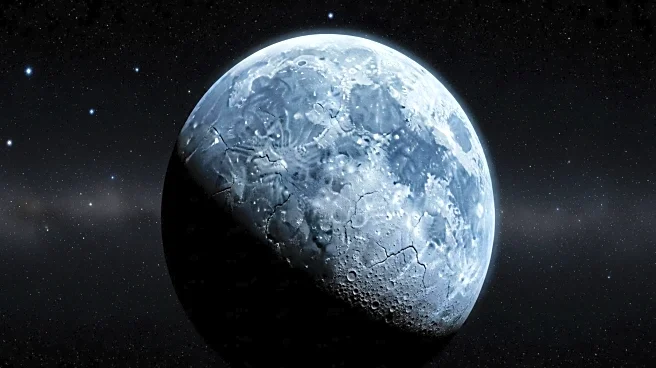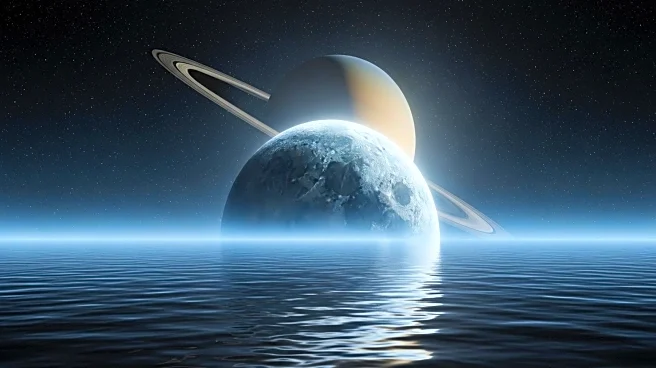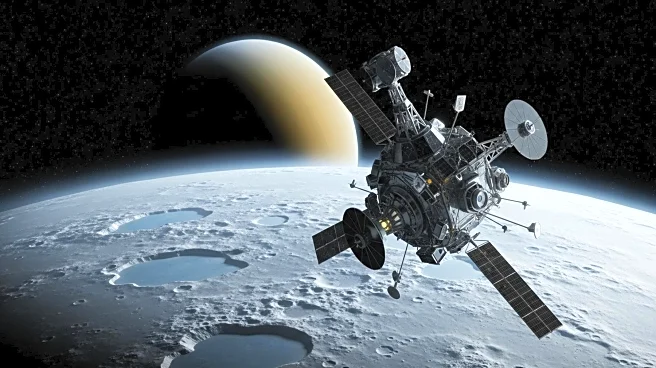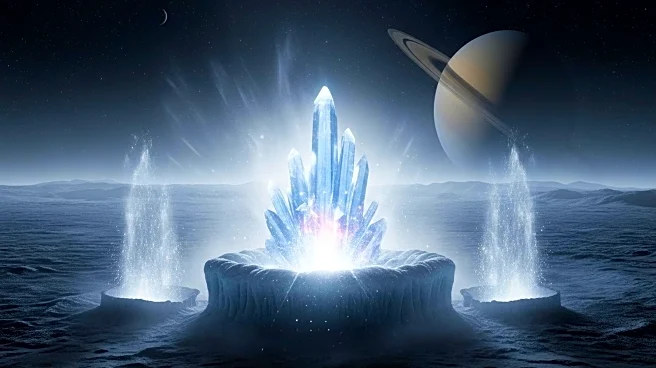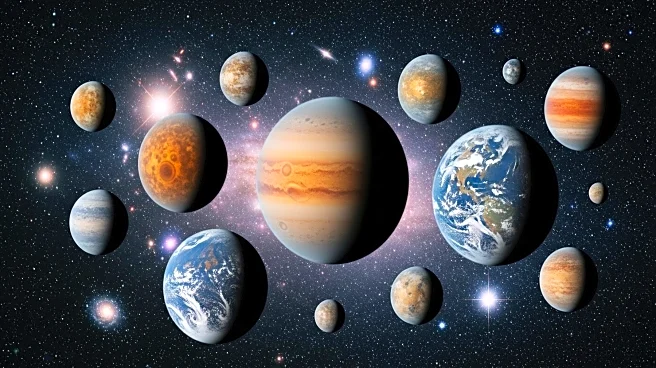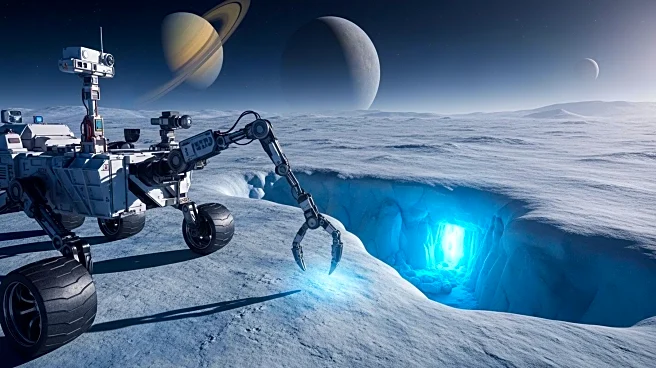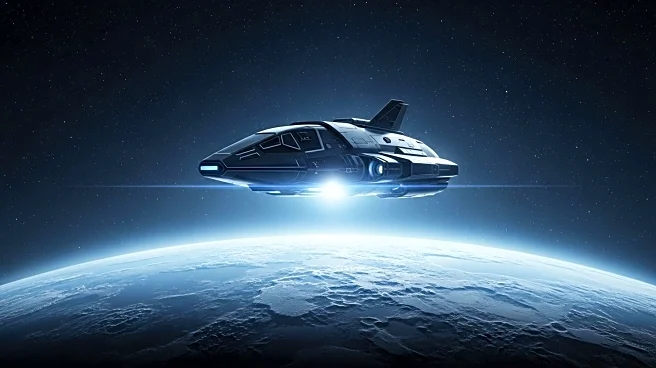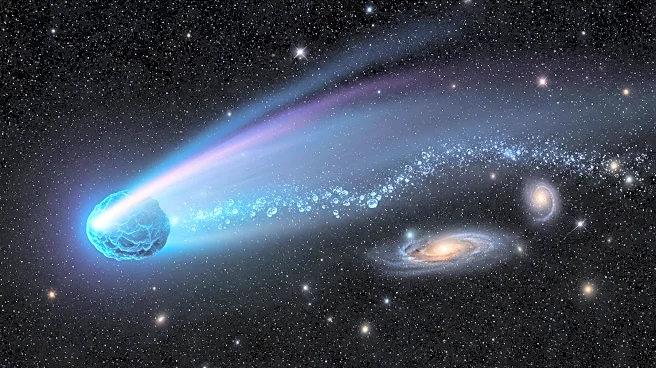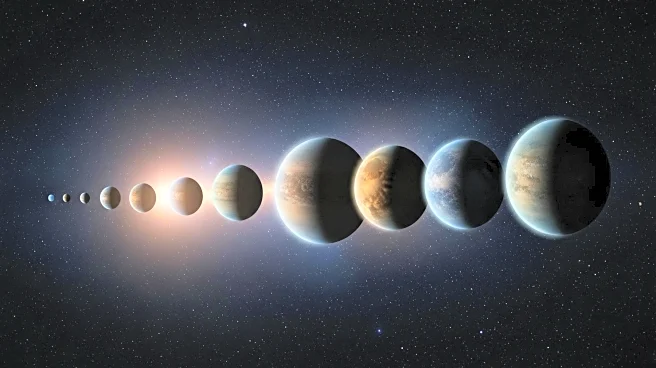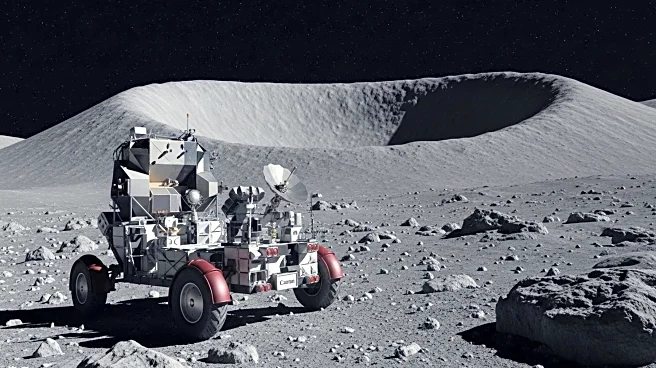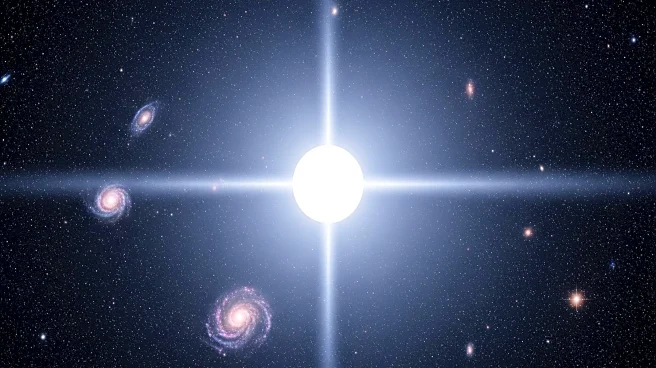What's Happening?
Recent research presented at the Europlanet Science Congress-Division for Planetary Sciences suggests that Saturn's moon Mimas may harbor a young subsurface ocean. Alyssa Rhoden, a planetary scientist at the Southwest Research Institute in Colorado, highlighted that despite Mimas' heavily cratered surface, new thermal and orbital models indicate the presence of liquid water beneath 12 to 19 miles of ice. This discovery was initially hinted at by data from NASA's Cassini spacecraft, but recent modeling has strengthened the case. The research suggests that changes in Mimas' orbit have generated internal heat through gravitational tides, melting portions of the icy shell within the past 10 to 15 million years. Adeene Denton, Rhoden's colleague, analyzed Herschel Crater to further understand the moon's history, suggesting the crater formed as the subsurface began melting.
Why It's Important?
The potential discovery of a subsurface ocean on Mimas could significantly alter the understanding of ocean worlds within the solar system. This finding challenges previous assumptions that Mimas was frozen solid and expands the criteria for identifying ocean worlds. The presence of liquid water is a key indicator of potential habitability, which could have implications for future astrobiological studies. If confirmed, Mimas would join other celestial bodies like Europa and Enceladus in the category of ocean worlds, prompting further exploration and study. This could lead to new missions aimed at detecting and studying these hidden seas, potentially uncovering new insights into the conditions necessary for life.
What's Next?
Future missions may focus on detecting the hidden ocean on Mimas with advanced orbiters capable of penetrating the icy surface. Researchers will likely continue to refine models and analyze data to confirm the presence of liquid water. The scientific community may prioritize Mimas in the context of exploring ocean worlds, potentially influencing funding and mission planning. As the narrative around Mimas evolves, it could become a focal point for discussions on planetary habitability and the search for extraterrestrial life.
Beyond the Headlines
The discovery of a subsurface ocean on Mimas could have broader implications for understanding the dynamics of celestial bodies in the solar system. It raises questions about the geological processes that can lead to the formation of oceans beneath icy surfaces. This finding may also influence the criteria used to classify other moons and planets as ocean worlds, potentially expanding the scope of astrobiological research. The ethical considerations of exploring and potentially exploiting these environments for scientific gain may also come into play, as researchers balance the pursuit of knowledge with the preservation of extraterrestrial ecosystems.
